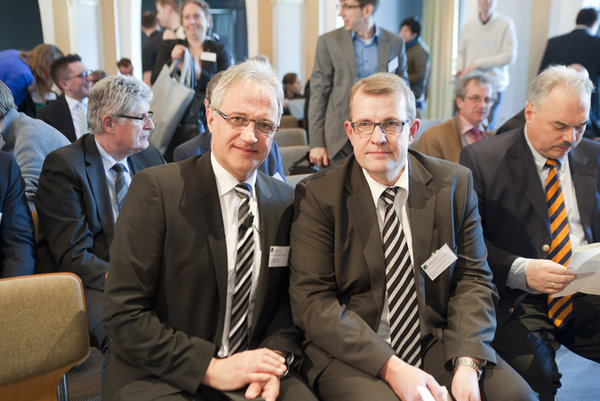Clausthal-Zellerfeld. Clausthal University of Technology stands for a high level of expertise in the field of materials. This became clear at the 1st Lower Saxony Symposium on Materials Technology. Around 140 guests from science and industry took part in the premiere of the conference, which was designed as a series of events. The two-day conference was organized by the Clausthal Center for Materials Technology (CZM).
In his welcoming address, CZM CEO Professor Volker Wesling emphasized the great economic importance of new materials: "German companies set an export record in 2014 and sold goods worth more than one trillion euros. Most of these are high-tech products, including many innovative materials." The scientists at Clausthal recognized this potential early on, according to Professor Wesling. "There have been materials-oriented degree courses in the Upper Harz region for more than 100 years." The idea of bringing teaching and research even closer together is behind the Clausthal Center for Materials Technology, whose research building was inaugurated in December 2013. Master's students can therefore get involved in research at an early stage. To the delight of materials expert Wesling, the center, which is intended to ensure the transfer of knowledge to small and medium-sized industry in addition to basic research, is already experiencing a great deal of international interest. It has already exchanged ideas with researchers from Kyrgyzstan, India, England and Thailand.
The CZM also has a close relationship with Professor Hans Ferkel. The Head of Research and Development at ThyssenKrupp Steel Europe, who habilitated at Clausthal University of Technology in 2001, gave the opening speech. The topic: "New and rediscovered perspectives of steel". To be successful in industry, good material must be process-capable, emphasized Professor Ferkel right at the beginning. He then presented three areas in which innovative steel materials and concepts could be successful in the future: in lightweight construction, in the field of renewable energies and in transportation infrastructure. For example, steel hybrid materials and a new three-layer steel composite in automotive construction could save up to 20 percent weight in the vehicle body. For onshore wind turbines, the researcher suggests using steel instead of concrete for tower construction. The advantage: the spiral-welded tubes are easy to transport and not too expensive. Ferkel could also see steel increasingly being used as the main component in infrastructure projects, for example in bridge construction. In addition to an attractive design and given cost-effectiveness, a modular system made of steel is easy to convert and quick to recycle.
In addition to metals and alloys, the more than 50 specialist presentations at the Materials Technology Symposium, which was also organized by the other Clausthal CZM board members Professor Wolfgang Maus-Friedrichs and Professor Gerhard Ziegmann, covered topics such as plastics, fibre composites, nanomaterials, non-metallic materials and processes. The extensive program was complemented by a scientific poster show and an evening event in the Aula Academica. "We are very satisfied with the response to this premiere event. The symposium was well received as a new exchange and discussion platform in the field of materials technology," said CZM Managing Director Dr. Henning Wiche. In future, the conference will take place every two years.
Contact:
Dr.-Ing. Henning Wiche
Clausthaler Zentrum für Materialtechnik
E-mail: sekretariat@czm.tu-clausthal.de
Phone: +49 5323 72-3330
Fax: +49 5323 72-3399
